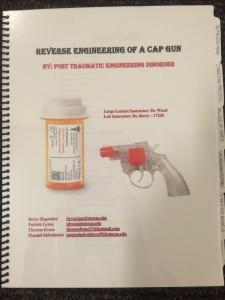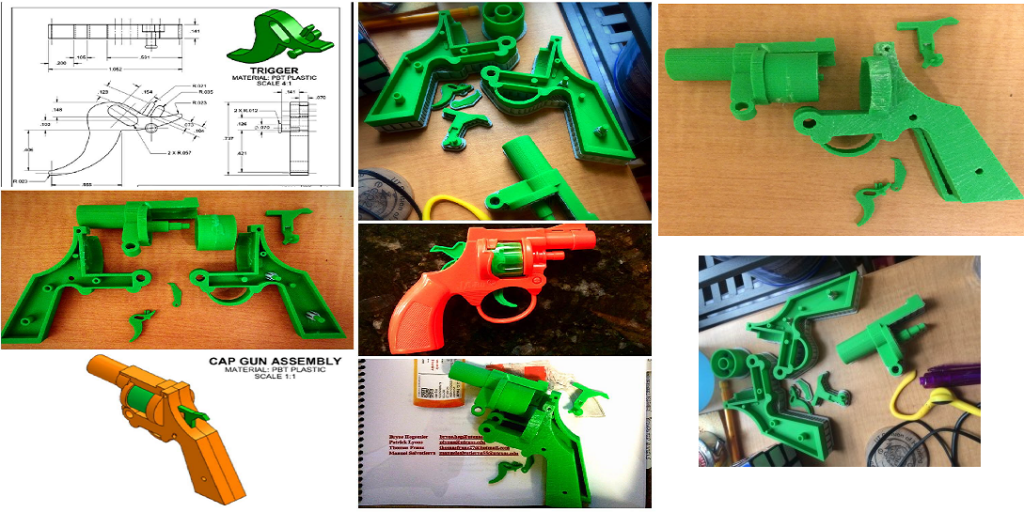
The first project assigned to students enrolled in the course was to reverse engineer an object of their choice. Reverse engineering is the process of looking at something already completed and working backwards in order to understand how it was created. Engineering Honors student Patrick Lyons joined with several of his classmates to reverse engineer a cap gun. The group entitled themselves “Post Traumatic Engineering Disorder” (PTED) and set about the study of their topic.
The first step was to simply dismantle the gun and study its component parts. The primary learning objective of this project was to familiarize students with the process of rapid prototyping using a pre-existing design. However, members of the PTED also took it upon themselves to engage in a certain amount of redesign. Much of the redesign was focused on the simplification of forms to ease the process of modeling and printing.
Each student in the group collected precise measurements and went to work in SolidWorks. After assigning materials to all of the parts–something made easier by the use of the program’s materials analysis function–and ensuring that they were strong enough to endure the stresses to which they would be subject, they saved the models as STL files. In addition, they created a set of precisely dimensioned drawings for each part so that the information would be readily available to anyone.
“This was by far the coolest project I’ve ever been a part of. Seeing the end result was really amazing after so many months of planning and work. 3D printing is an incredible industry and the University of Texas at Austin is really providing the opportunities necessary for all of us to learn additive manufacturing. We don’t have plans to push this project forward or necessarily make anymore cap guns, but using the skills developed throughout this process I intend to create many more 3D prints in the coming years. I can’t wait to see what I print next!”
I have seen cap guns bring out the inner child in people of all ages and while this project is probably more complex than something that could be mastered by that inner child, the potential for play is clearly available through both the process and the product here.
Let us know if you’ve heard of similar success in the educational field in the Reverse Engineering a Cap Gun forum thread over at 3DPB.com.
